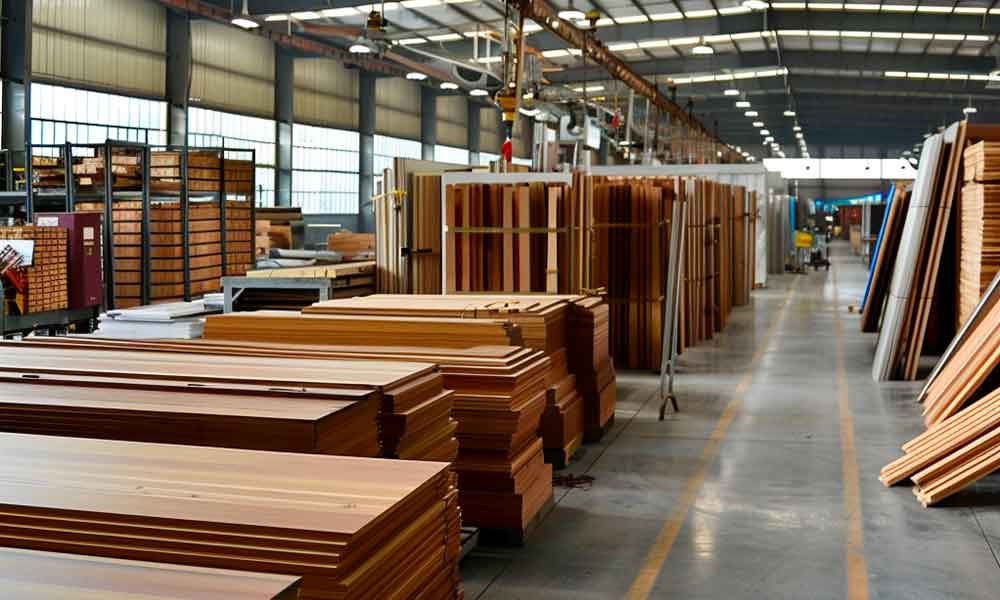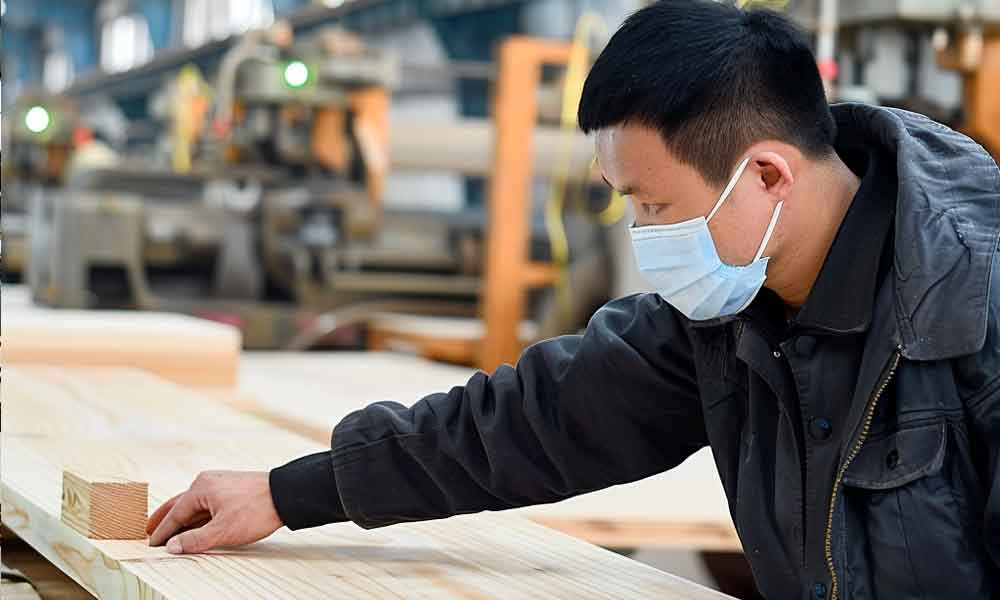Measuring & Fitting Included
Get an immediate price using our online estimator
Years’ of experience
Daytime, evening & weekend appointments
What Woods Are Used In The Production Of Interior Shutters
| Wood | Characteristics | Sustainability |
|---|---|---|
| Paulownia | Lightweight, fine-grained, pale color, straight grain pattern | Highly sustainable due to its fast growth rate and ability to regenerate quickly. Often considered an environmentally friendly choice. |
| Basswood | Lightweight, fine-grained, pale color, uniform texture | Moderately sustainable. It is widely available and can be sourced from well-managed forests, but overharvesting can be a concern. |
| Poplar | Medium-weight, fine to medium grain, pale to creamy white color | Moderately sustainable. Poplar trees grow relatively quickly and are commonly grown in plantations, but sourcing practices vary. |
| Pine | Medium to lightweight, medium to coarse grain, various colors including pale yellow to reddish-brown | Sustainable when sourced from responsibly managed forests or plantations. Pine is widely available and used in many applications. |

Paulownia Wood And Its Use In The Interior Shutters Industry
When it comes to the interior shutters industry, Paulownia wood has become a popular choice among homeowners and designers alike. This lightweight, durable, and sustainable wood has a variety of uses in the creation of interior shutters. In this article, we will explore the benefits of using Paulownia wood in the interior shutters industry and why it has become a preferred material for many.
Benefits of Paulownia Wood in Interior Shutters
Lightweight
One of the main advantages of Paulownia wood is its lightweight nature. This makes it easy to work with and install, especially when it comes to interior shutters. The lightweight nature of Paulownia wood also makes it easier to manipulate and customize, allowing for unique and intricate designs. Additionally, the light weight of Paulownia wood reduces the strain on hinges and hardware, increasing the longevity of the shutters.
- Easy to work with and install
- Allows for unique and intricate designs
- Reduces strain on hinges and hardware
Durable
Despite being lightweight, Paulownia wood is incredibly durable. It can withstand daily wear and tear, making it a long-lasting option for interior shutters. Its durability also means that it requires minimal maintenance, saving homeowners time and money in the long run. Furthermore, the durability of Paulownia wood makes it resistant to warping, cracking, and rotting, ensuring the shutters maintain their integrity over time.
- Withstands daily wear and tear
- Requires minimal maintenance
- Resistant to warping, cracking, and rotting
Sustainable
Paulownia wood is known for its sustainability. It is a fast-growing tree species that can be harvested in a relatively short amount of time. This makes it an eco-friendly option for those looking to reduce their environmental impact. Additionally, Paulownia wood is biodegradable, ensuring that it is a sustainable choice for interior shutters. By choosing Paulownia wood, homeowners can contribute to the preservation of forests and reduce carbon footprint.
- Fast-growing tree species
- Eco-friendly option
- Biodegradable and sustainable
Versatile
Another benefit of Paulownia wood is its versatility. It can be easily stained, painted, or left natural, allowing for a wide range of design options. Whether you prefer a modern, sleek look or a more traditional feel, Paulownia wood can be customized to suit your style and preference. Additionally, the versatility of Paulownia wood extends to its ability to be used in various styles of interior shutters, from classic to contemporary designs.
- Easily stained, painted, or left natural
- Wide range of design options
- Suitable for various styles of interior shutters
Uses of Paulownia Wood in Interior Shutters
Custom Shutters
Paulownia wood is often used to create custom interior shutters. Its lightweight nature and durability make it a popular choice for homeowners looking to add a touch of elegance to their windows. Custom Paulownia wood shutters can be tailored to fit any window size or shape, ensuring a perfect fit and seamless integration into your home decor. Additionally, custom shutters made from Paulownia wood can be designed with specific features such as tilt rods, divider rails, and hidden hinges for a personalized touch.
- Tailored to fit any window size or shape
- Customizable with specific features
- Seamless integration into home decor
Plantation Shutters
Plantation shutters, also known as traditional shutters, are another popular application for Paulownia wood. These shutters are typically wider, providing a classic look that complements a variety of interior styles. Paulownia wood’s versatility allows for plantation shutters to be customized with louvers, panels, and frames to create a timeless and elegant window treatment. Moreover, plantation shutters made from Paulownia wood offer excellent light control and privacy options, making them a practical and stylish choice for any home.
- Wider design for a classic look
- Customizable with louvers, panels, and frames
- Excellent light control and privacy options
Sliding Shutters
For homeowners looking for a more contemporary option, sliding shutters made from Paulownia wood are a great choice. These shutters slide horizontally on a track, providing a sleek and modern look to any room. The lightweight nature of Paulownia wood makes sliding shutters easy to operate, allowing for effortless adjustment of light and privacy levels. Additionally, sliding shutters made from Paulownia wood are space-saving and perfect for rooms with limited space, offering a stylish solution for window coverings.
- Horizontal sliding design for a modern look
- Easy to operate and adjust light levels
- Space-saving solution for rooms with limited space
Paulownia wood is a versatile and sustainable option for interior shutters in the industry. Its lightweight nature, durability, and customization options make it a popular choice among homeowners and designers alike. Whether you are looking for custom shutters, plantation shutters, or sliding shutters, Paulownia wood provides a practical solution for various window treatment needs.

Paulownia Wood FAQ's
What are the benefits of using Paulownia wood in the interior shutters industry?
Paulownia wood is lightweight, durable, sustainable, and versatile. It is easy to work with, allows for unique designs, reduces strain on hardware, withstands daily wear and tear, requires minimal maintenance, is resistant to warping and rotting, grows fast, is eco-friendly, biodegradable, and can be easily customised.
What are the different uses of Paulownia wood in interior shutters?
Paulownia wood is commonly used for custom shutters, plantation shutters, and sliding shutters. Custom shutters can be tailored to fit any window size or shape, plantation shutters offer a classic look with excellent light control and privacy options, while sliding shutters provide a modern, space-saving solution for rooms with limited space.
Why is Paulownia wood a popular choice for custom shutters?
Paulownia wood is a popular choice for custom shutters due to its lightweight nature, durability, and customization options. It can be tailored to fit any window size or shape, customized with specific features, and seamlessly integrated into home decor.
How does Paulownia wood contribute to sustainability in the interior shutters industry?
Paulownia wood is considered sustainable due to its fast-growing nature, eco-friendly characteristics, and biodegradability. By choosing Paulownia wood for interior shutters, homeowners can help preserve forests, reduce their carbon footprint, and contribute to environmental conservation efforts.
Some Of The Other Woods Used In Interior Shutters Production
| Wood | Characteristics | Sustainability |
|---|---|---|
| Cedar | Lightweight, aromatic, straight grain, reddish-brown color | Sustainably sourced cedar is commonly available and widely used. It is known for its natural resistance to decay and insects. |
| Maple | Hardwood, fine texture, uniform grain, light color | Maple is moderately sustainable when sourced from well-managed forests. It is highly valued for its strength and durability. |
| Oak | Hardwood, prominent grain, various colors including light tan to deep brown | Oak is commonly sourced from sustainably managed forests. It is durable and widely used in furniture and cabinetry. |
| Cherry | Hardwood, fine texture, rich color ranging from reddish-brown to deep red | Cherry wood is moderately sustainable when sourced from well-managed forests. Its rich color darkens with age and exposure to light. |
| Mahogany | Hardwood, straight grain, reddish-brown color, high durability | Mahogany is often sourced from well-managed plantations. It is prized for its beauty, stability, and resistance to decay. |
| Alder | Medium-weight hardwood, fine texture, uniform grain, light color | Alder is moderately sustainable and readily available. It is often used as a more affordable alternative to other hardwoods. |
| Walnut | Hardwood, fine texture, straight grain, dark brown color with occasional purple hues | Walnut is moderately sustainable when sourced from well-managed forests. It is prized for its rich color and distinctive grain patterns. |
When it comes to choosing the right wood for interior shutters, there are several other options available. The type of wood used can significantly impact the overall look and feel of your interior shutters, so it’s important to consider your options carefully. Here are some of the other popular woods used in the production of interior shutters:
Basswood
Basswood is one of the most common woods used in the production of interior shutters. It is a light and durable wood that is easy to work with, making it a popular choice among manufacturers. Basswood has a smooth surface that takes stain well, allowing for a customizable finish that can complement any style of décor. Additionally, basswood is known for its stability, which helps prevent warping and cracking over time.
- Basswood is lightweight and easy to work with, making it a preferred choice for manufacturers.
- The smooth surface of basswood allows for a customizable finish that can suit any interior design.
- The stability of basswood helps maintain the shape of the shutters over time, preventing warping.
Cedar
Cedar is another popular choice for interior shutters due to its natural resistance to decay and pests. This makes cedar a great option for areas with high humidity or moisture, such as bathrooms or kitchens. Cedar has a distinct aroma and a rich, warm tone that can add a touch of elegance to any room. However, cedar can be more expensive than other wood options, so it’s important to weigh the cost against the benefits.
- Cedar is naturally resistant to decay and pests, making it ideal for humid environments.
- The aromatic quality and warm tone of cedar can enhance the ambiance of a room.
- While cedar may be pricier, its durability and elegance make it a worthwhile investment.
Poplar
Poplar is a versatile wood that is commonly used in the production of interior shutters. It is lightweight, durable, and has a fine texture that can easily take on different finishes. Poplar is also an affordable option, making it a popular choice for budget-conscious homeowners. While poplar is not as resistant to moisture as cedar, it is still a good choice for most interior applications.
- Poplar’s lightweight and durability make it a practical choice for interior shutters.
- The fine texture of poplar allows for various finish options to match different décor styles.
- Affordable pricing makes poplar a cost-effective option for homeowners on a budget.
Maple
Maple is a hardwood that is known for its strength and durability, making it an excellent choice for interior shutters. Maple has a smooth, uniform grain that can be stained or painted to achieve a desired look. While maple is more expensive than some other wood options, its longevity and timeless appeal make it a worthwhile investment for many homeowners.
- Maple’s strength and durability make it a reliable choice for long-lasting interior shutters.
- The smooth grain of maple allows for customizable finishes to suit different design preferences.
- Although maple may come at a higher price point, its longevity and classic appeal justify the investment.
Oak
Oak is a hardwood that is prized for its durability and distinctive grain pattern. Oak shutters can add a touch of traditional elegance to any room, making them a popular choice for classic or rustic interior designs. While oak can be more expensive than other wood options, its natural beauty and longevity make it a valuable addition to any home.
- The durability and unique grain pattern of oak contribute to its timeless elegance.
- Oak shutters are ideal for traditional or rustic interior designs, adding a touch of sophistication.
- Despite the higher cost, oak’s natural beauty and lasting quality make it a worthwhile investment.
In conclusion, the type of wood used in the production of interior shutters can greatly impact the overall look and performance of your window treatments. Each type of wood has its own unique characteristics and benefits, so it’s important to consider your specific needs and preferences when choosing the right wood for your shutters. Whether you prefer the lightness of basswood, the durability of cedar, the affordability of poplar, the strength of maple, or the classic beauty of oak, there is a wood option that can enhance the beauty and functionality of your interior shutters.
Remember to consult with a professional manufacturer or designer to determine the best wood option for your specific requirements. With the right wood choice, you can enjoy beautiful and functional interior shutters that will enhance the aesthetics of your space for years to come.
Solid Wood Shutters FAQ's
What are some popular woods used in the production of interior shutters?
Some popular woods used in the production of interior shutters include basswood, cedar, poplar, maple, and oak.
What are the benefits of using basswood for interior shutters?
Basswood is lightweight, easy to work with, has a smooth surface that takes stain well, and is known for its stability, preventing warping over time.
Why is cedar a popular choice for interior shutters?
Cedar is naturally resistant to decay and pests, making it ideal for humid environments. It also has a distinct aroma and warm tone that can add elegance to any room.
What makes maple a good choice for interior shutters despite being more expensive?
Maple is known for its strength, durability, smooth grain that allows for customizable finishes, and classic appeal, justifying the investment for many homeowners.

Kirsty
Kirsty is a skilled content writer and web designer at Custom Fitted Blinds, blending creativity and expertise to craft captivating content and visually stunning websites. With a keen eye for detail and a commitment to excellence, she delivers tailored solutions that engage the audience.
Blinds Range
Shutters Range
Important Links
© 2024 All rights reserved
Made with ❤ with Elementor
